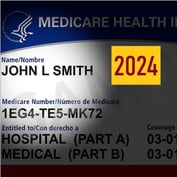What You Need to Know
- This year's larger-than-average Social Security COLA could increase retirees' annual incomes to the point where they’re bumped into higher tax brackets.
- To minimize their overall tax liability, most clients should consider taking withdrawals from multiple accounts based on their individual circumstances.
The 2023 Social Security cost-of-living adjustment (COLA) is 8.7% — the largest COLA that has been seen for decades (by contrast, the 2022 COLA was 5.9%).
While the increase provides a powerful tool to help retirees cover rising prices caused by sky-high inflation levels, it can also create unanticipated headaches from a tax perspective. That’s because recipients’ annual incomes could increase to the point where they’re bumped into higher tax brackets — meaning that more of their overall Social Security benefits will be taxed.
Those taxpayers have options to mitigate the impact of a larger-than-average COLA and should take steps now to minimize their 2023 tax liability.
Understanding How Taxes Apply to Social Security Benefits
The Social Security COLA is determined based on the Consumer Price Index for all Urban Wage Earners and Clerical Workers (CPI-W). The COLA amount for 2023 is unsurprisingly high, given the rising cost of groceries, gasoline, housing and other basic necessities.
Not all Social Security benefits are taxed at the same rate. The level of taxation depends on the recipient’s “combined income” level. “Combined income” means (1) one-half of the taxpayer’s Social Security benefits, plus (2) all of other income, including tax-exempt interest.
That means wage and salary income, interest income, pension benefits and even withdrawals from traditional retirement accounts are counted in determining whether the taxpayer’s benefits are taxable.
If a taxpayer’s overall income is over $34,000 per year ($44,000 for married taxpayers who file joint returns), up to 85% of the taxpayer’s Social Security benefit may be taxed. Up to 50% of a taxpayer’s Social Security benefits may be subject to taxation if the individual’s combined income falls between $25,000 and $34,000 ($32,000 and $44,000 for joint filers).
Notably, these threshold income levels are not indexed for inflation — meaning that many more clients are taxed on their Social Security benefits.
The precise amount of Social Security benefits that are taxed is based on a formula and varies depending on the taxpayer’s specific income level (regardless of income level, Social Security beneficiaries never pay tax on more than 85% of their benefits).









 November 30, 2022 at 11:19 AM
November 30, 2022 at 11:19 AM











